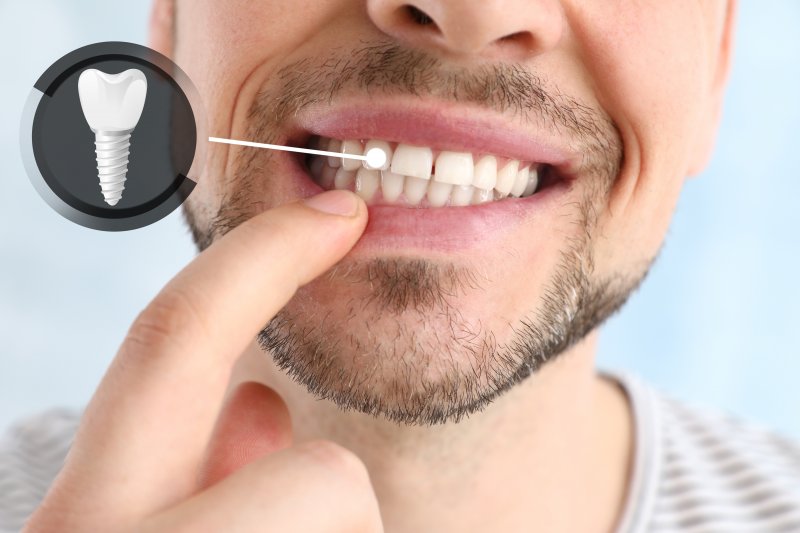
If you want the best method for replacing missing teeth, then dental implants are certainly the top contender. These titanium posts are not only durable and lifelike, but they can also typically last for decades or even the rest of your life if you take good care of them. However, while they usually have a success rate of 95%, there’s always a small possibility that they can start to feel loose. Read on to learn what can cause this to happen and how you can address the situation.
What Can Make a Dental Implant Become Loose?
While this is typically rare, a dental implant can begin to feel loose for a variety of reasons. In the majority of cases, your restoration itself—the dental crown, bridge, or denture—will be attached to your metal posts so that they are thoroughly secured to your mouth. Even so, if the new tooth ever gets damaged or injured, this can cause it to weaken, loosen, or even fall out of your mouth entirely.
Dental implants can also feel loose when the post itself has begun to fail to stay in position. Once you’ve undergone your procedure, your jawbone will need to undergo a process called osseointegration—when the post starts to fuse with the bone tissue. This is what will allow the implant to serve as your new tooth root. However, in rare instances, a medical condition or accidental injury can interfere with this process, which can then cause the implant to fail. Even if osseointegration is completed, infection of the connective tissues or gums, such as peri-implantitis, can result in a loose or failed dental implant.
How Can Your Dentist Fix Your Dental Implant?
Although dental implants rarely fail, you’ll want to know what you can do to resolve the issue should it arise. If you notice any changes to your new tooth or suspect failure, simply notify your dentist about the situation so they can address the underlying problem. They can thoroughly evaluate your mouth, identify the reason for a loose dental implant, and determine the proper way to fix it. In most cases, this may involve needing to replace the restoration or switching out the abutment with a new one (the small metal connector piece that links the restoration to the implant). Other situations might require getting rid of the infection first or even performing a bone graft to strengthen the jawbone.
In any case, your dentist will walk you through the details of your treatment plan so that you know exactly how they can save your dental implant. After you’ve undergone the proper care and completed recovery, you’ll be able to get right back to enjoying your full smile again!
About the Author
With many years of experience in the dental field, Dr. Henry Diep strives to provide the personalized and long-lasting care his patients deserve. A graduate of Midwestern University in Glendale, AZ, he is a proud member of the California Dental Association and remains dedicated to refining his skills and expertise in various topics, including dental implants. If you’d like to know more about this treatment or wish to schedule an appointment, visit his website or call our team at 510-314-8426.
